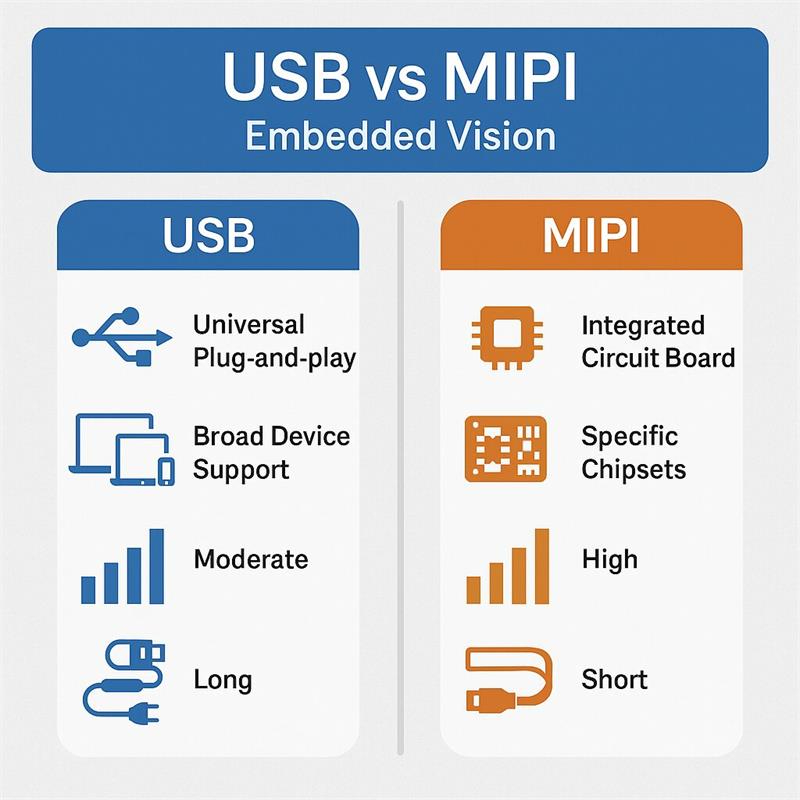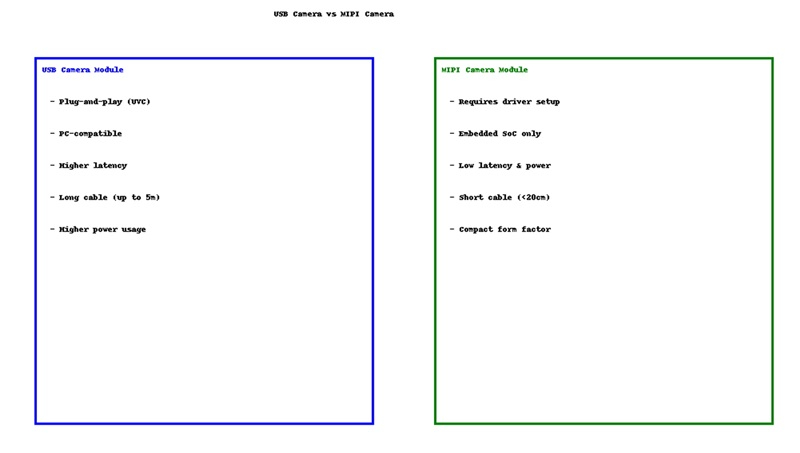
USB (Universal Serial Bus) cameras are external plug-and-play devices commonly used with PCs and embedded boards. MIPI (Mobile Industry Processor Interface) CSI cameras are internal modules that connect directly to the processor via a CSI-2 interface, enabling low-latency, high-performance applications.
Ease of Integration:
- USB: Plug-and-play, UVC supported, great for quick prototyping.
- MIPI: Requires driver and hardware tuning, suitable for mass production.
Performance & Latency:
- USB: Higher latency (~80–150ms), limited bandwidth.
- MIPI: Ultra-low latency (~30ms), high speed, optimized for inference.
Power:
- USB: Typically 150–500mA.
- MIPI: Lower power draw, integrated with SoC.
Software Support:
- USB: Broad compatibility via UVC and OpenCV.
- MIPI: Requires board-specific drivers and pipelines.
Cable & Form Factor:
- USB: Long cable, larger size.
- MIPI: Short FPC cable, compact size.

- PC-based Vision System: USB Camera
- Raspberry Pi Face Recognition: MIPI Camera
- Jetson Nano AI Box: MIPI Camera
- Factory Inspection: USB Camera
- Automotive: MIPI (for integration and power efficiency)
Choose USB Camera if:
- You need plug-and-play capability.
- You are connecting to PC or Linux SBC.
Choose MIPI Camera if:
- You are building a compact embedded system.
- You need low latency and real-time performance.
USB 5MP, UVC, Sony IMX335 camera module, UC-501 15*15mm micro USB camera 2MP
MIPI 2MP Global Shutter, optimized for Jetson, Pi
USB and MIPI cameras both have value in embedded vision. USB is easier for beginners or PC-based setups. MIPI is the go-to for low-power, real-time AI devices. The right choice depends on your platform, goals, and project scale.

Novel Manufacture Ltd offer various Miniature USB camera and UVC camera module for Embedded Vision systems,